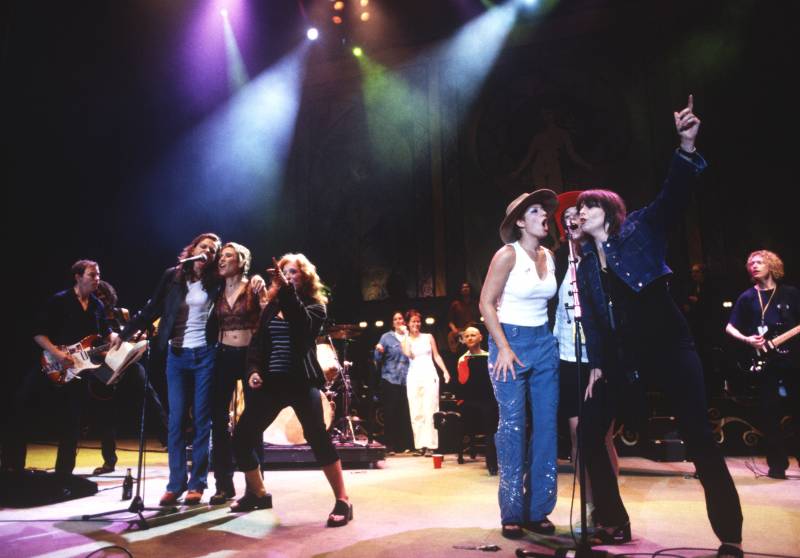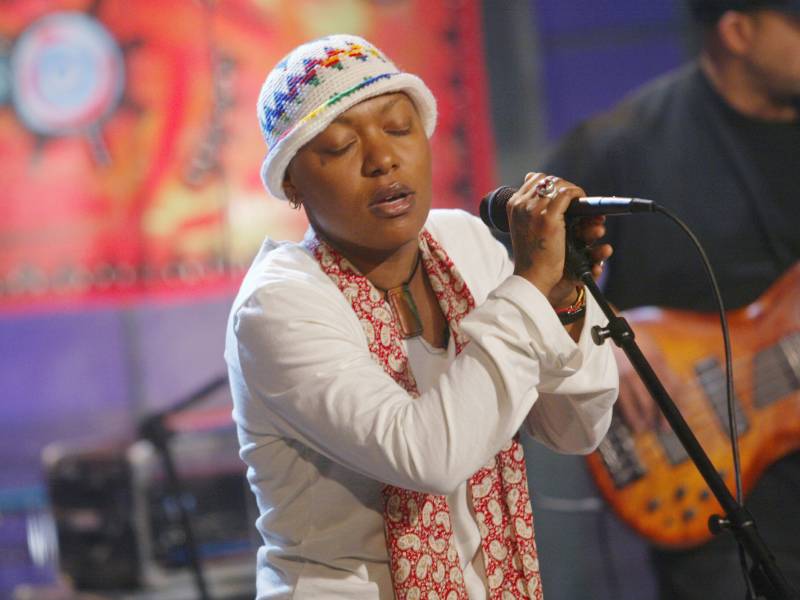“Some of these women were told by their agents, ‘This is going to kill your career if you do this,'” says Hopper, referring to early industry doubts around the festival’s founding. “And in fact the opposite happened … it minted stars.”
It was partly the demands of Sarah McLachlan’s own celestial career that brought an end to Lilith Fair. Releasing two albums in three years, kick-starting a major touring festival and getting married—all milestones that left the singer exhausted. As McLachlan recounted to Glamour Magazine in 2017, “I’ve got to go home. And I have to have a life. People have been having babies and getting married and divorced, and I’ve missed it all.”
But in 2010, McLachlan tried to get Lilith off the ground again, turning to former festival favorites such as Erykah Badu and Tegan and Sara.
Lilith Fair’s second iteration faced several obstacles. For one, McLachlan was now the mother of two daughters and was busy finishing yet another album. As she explained to Glamour, she was headlining the tour and working with many of the same behind-the-scenes coordinators who had helped manage previous tours. Still, disorganization and shoddy financial management caused many artists—including Kelly Clarkson and Norah Jones—to drop out of shows at the last minute.
What’s more, the music industry had undergone a seismic change over a decade. The digital music era meant that audiences were now discovering new music online, rather than on touring festival lineups. Ticket prices had also increased, with some Lilith VIP packages costing $750.
McLachlan later speculated that, much like herself, Lilith’s original audience had developed a different set of priorities. “A lot of the young women who came to Lilith back then now have kids at home, have busy careers,” she told the Canadian Broadcasting Corporation in 2012. “And I don’t think we did enough due diligence in discovering how our audience had changed and how to reflect that. In a new show, we kind of threw up the same model, which, you know, obviously in hindsight was quite stupid and it didn’t get the audiences that we expected to get.”
McLachlan and her partners ended up canceling the tour after only a few shows.
Lilith’s legacy 25 years later
Looking back, did Lilith achieve what it set out to accomplish?
Ann Powers says yes. She says it upended longstanding presumptions that audiences wouldn’t connect with the femininity and eclecticism of an all-female music festival. Not only that, Lilith Fair radically expanded creative possibilities for women musicians, who took to its stages to triumph, to experiment, even to fail and to try again.
“This is a snapshot of a huge array of what women were doing in music in this era when there was a lot of space and demand for women of all kinds to be taking risks in music,” Powers says. “And Lilith Fair is almost like, ‘Here’s your compilation of every wild idea that women had in music in the ’90s.’ And I think so much of that stuff is just, like, forgotten.”
For the artists and fans who experienced it, Lilith Fair felt revolutionary. Its success upended concert industry norms and created a new place where female artistry could evolve and flourish. Lilith Fair was a cultural phenomenon that coalesced at just the right time.


9(MDAxOTAwOTE4MDEyMTkxMDAzNjczZDljZA004))

